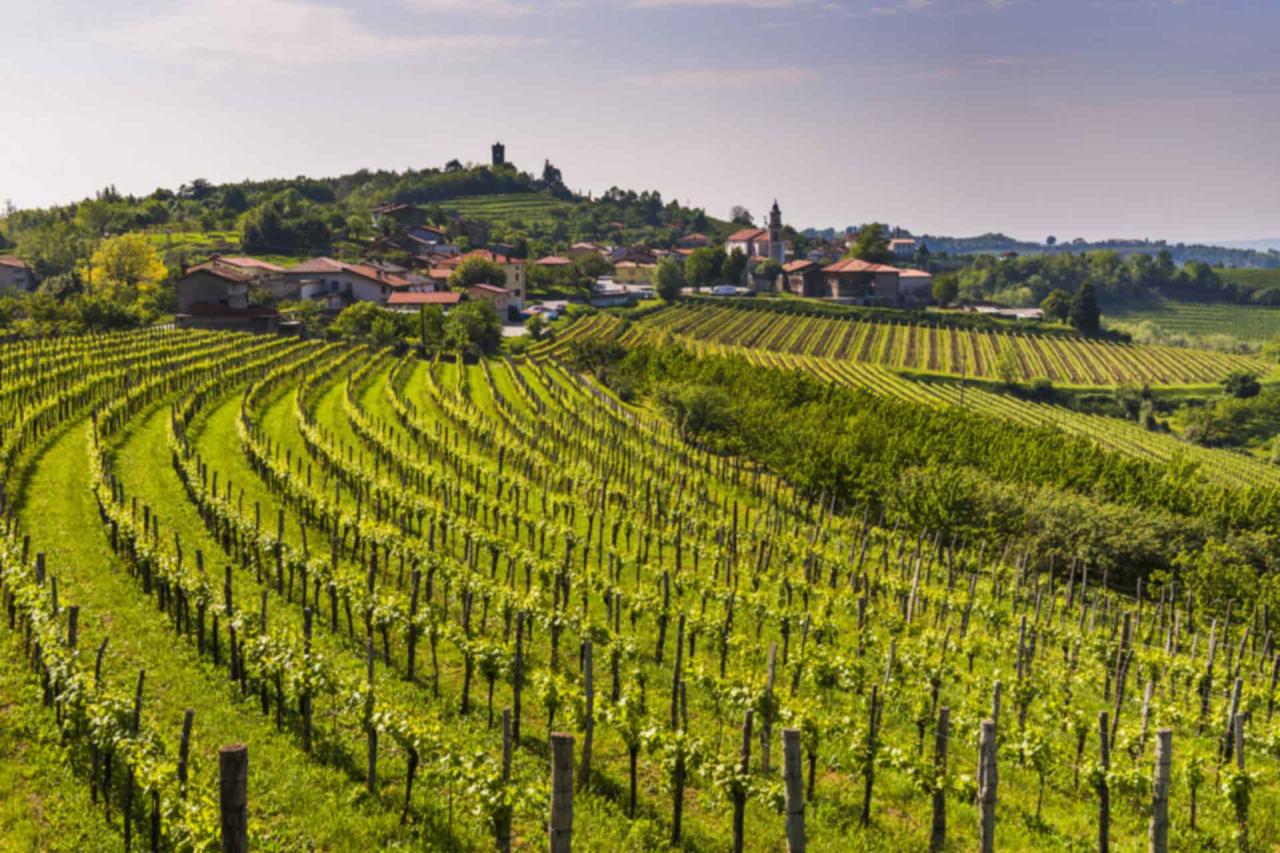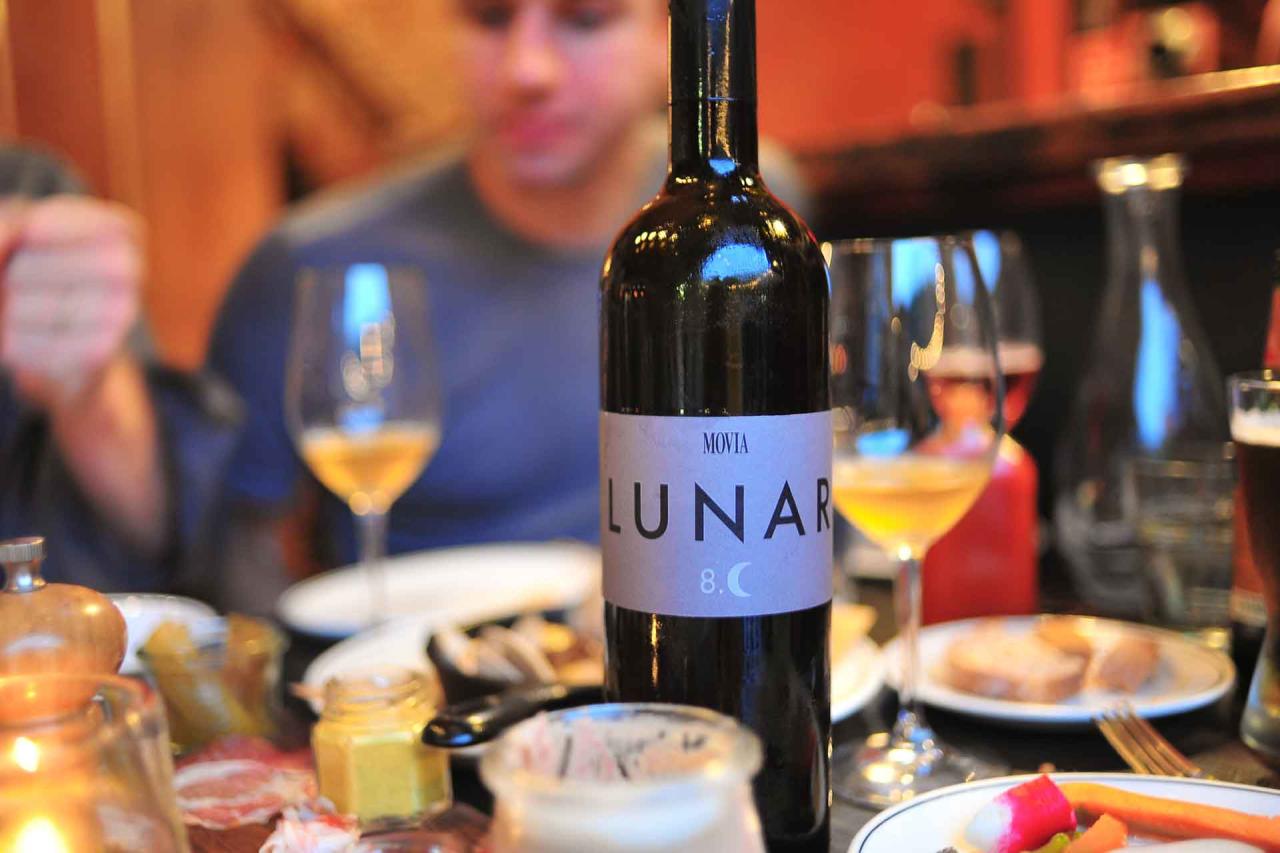Although orange wines have only come to the attention of the consumer in the last few decades, they have very ancient origins, which date back to the earliest winemaking practices.
Originally from the Caucasus, the production of these wines involves a long maceration on their skins and the use of traditional terracotta amphorae as wine vessels for maceration, fermentation and maturation.
These practices were mostly abandoned after the Second World War, but they have been recently rediscovered. Currently Orange wines are produced in many countries of the world, including Georgia and Armenia, but some of the most famous ones come from North East Italy (Collio) and Slovenia (Goriška Brda, Vipava valley, Karst, Slovenian Istria).
Thanks to their peculiar characteristics, Orange wines offer great versatility in food and wine pairings that include both meat and fish and oriental cuisines.
Now let’s have a look more in detail at where these wines come from, how they are made, and what makes them so special and unique. Here is our guide to Slovenian orange wine.
Get updates on the latest posts and more from Wine Bugle straight to your inbox.
How is orange wine made
Orange wines are produced from white grapes that are left in contact with their skins for a period ranging from a few days to months. It is precisely this long maceration that develops the tannins not present in the classic whites, and gives them that distinctive orange or amber color.
Fermentation usually takes place with indigenous yeasts, without temperature control, and minimizing human intervention. The wines are then often aged in underground amphorae and bottled without any filtration. The absence of preservatives such as sulfur dioxide allows the wine to be enriched with polyphenols and tannins, which partly protect its integrity over time.
This vinification process comes from the Caucasus area, and more precisely from Georgia, the true cradle of Vitis Vinifera. In this area, between Europe and Asia, the tradition of maceration has been handed down over the centuries to the present day.
Historically known in Georgia as Karvisperi Ghvino, it is said that it was the English importer David A. Harvey who gave life to the neologism ‘Orange Wine’ to bring them together in his catalog under a single category.
Today, however, these wines have a special section on the main wine lists, to underline their uniqueness.
Can Slovenian orange wines be considered "natural wines"?
Yes. Most Slovenian Orange Wines, like all natural wines, come from organic or biodynamic agriculture, therefore free of any synthetic substance, such as phytosanitary treatments, herbicides, and chemical fertilizers.
The treatments used in the vineyard are mainly based on copper and sulfur, in low quantities, and natural preparations.
In the cellar, fermentation takes place exclusively with indigenous yeasts. And any other practices that can influence the final wine such as filtration, stabilization, cryomaceration, reverse osmosis, etc., commonly used in the production of conventional wines, are avoided.
Orange wine Slovenia
Slovenia is a small country, both from a territorial point of view and in terms of wine production. Its location on the border with the northeast of Italy and close to the sea gives it strategic climatic conditions that are beneficial to vine-growing.
Although the cultivation of the vine has secular origins that date back to the ancient Romans, the vineyards cover only 3% of the total area of the country and the production is divided into many small companies.
From a viticultural point of view, Slovenia is organized into three main wine regions, Podravje, Posavje, and Primorska, further subdivided into nine districts, from which most Slovenian wines come.

Primorska
Slovenia is one of the top producers of orange wines, that are especially popular in the Primorska coastal region.
Located in the southwest of Slovenia bordering Croatia to the south and Italy to the north-west, Primorska covers more than 7,399 hectares of vineyards spread over four districts: Vipava Valley, Slovenian Istria, Goriška Brda and Kras.
Its warm Mediterranean climate allows the production of some of the best Slovenian wines. The abundance of sunny days makes the wines from this region very rich and complex. The vineyards, located at an altitude of up to 400 meters, boast soil consisting largely of flysch and dolomitic limestone.
Local winegrowers produce all types of wine, but orange wines are becoming more and more popular in the region.
The production of macerated white wines had remained in disuse until the early nineties, when a small group of expert winemakers, led by Josko Gravner and Aleks Klinec, from the Italian and Slovenian side of the Collio, recovered them.
Their goal was to rediscover the ancient origins of wine in its most genuine form and create white wines with greater structure and a richer aromatic profile. They began their experiments with Ribolla grape, which is particularly suitable for this technique, obtaining exciting results and creating a new trend.
Podravje
The Podravje region, the largest of the Slovenian wine regions, is located in the north-east, on the border with Austria and Hungary, and is divided into the two districts of Štajerska Slovenija and Prekmurje both widely known for their sparkling wines.
Here, where the 400-year-old oldest productive vine in the world is located, the pedoclimatic conditions are completely different from the coastal area and the production focuses on fruity and floral white wines from Riesling Italico and Sauvignon, Gewurztraminer, and Moscato Giallo grapes.
Posavje
The Posavje region is located in the south-eastern area on the border with Croatia and is divided into three wine districts: Bizeljsko-Sremic, known for its sparkling wines, Bela Krajina, where exceptional rosé wines are produced, and Dolenjska, where both white and red wines are made.
Dolenjska is also famous for the traditional Cvicek, an assembly of at least four types of wine, much loved by the locals but of questionable quality.
Orange wine: serving suggestions and food pairings
Orange wines should be served between 12° and 14°C.
Despite being made from white grapes, they tend to be much more aromatic, wider and more persistent than white wines. This is why they are best paired with tasty and rich preparations, with intense flavors and excellent aromatic persistence.
They go hand in hand with oriental spices and are perfect in combination with Pakistani, Indian or Thai cuisine. But if you are a sushi addict, you should definitely try an orange wine with sashimi and nigiri!
Our suggestions
Klinec, Rebula
From the heart of the Slovenian Collio (Goriška Brda), this is one of the most iconic orange wine brands. The wine shows complex sensations with white pulp fruits, minerals, dried fruits and flowers. Extremely deep on the palate, but always dynamic thanks to a super sapidity!
Zorjan, Muškat Ottonel
This is a bucket list wine. On the nose, the wine gets hints of pear and minerals. The palate is deep with lovely acidic notes, apple, lime, caramel, cedar and clementine with a delicate almond after taste. The 2017 vintage made it to the top of Decanter’s list of the thirty best orange wines worlwide.

Movia, Lunar
Lunar by Movia is an orange wine made from a blend of Ribolla and Chardonnay. Maceration and aging on the skins take place in French oak barrels for about eight months. The result is an intense, powerful and buttery wine with notes of honey, toffee, apple pie, caramel, pineapple, almond tart, and a savory-mineral nuance. In the mouth, it reveals a round structure and a slightly smoky finish.
Klabjan, Kakovostno Vino Malvasija “Black Label”
Produced from over one hundred year old ungrafted vines cultivated on soils composed of white earth, clay and flysch, this biodynamic wine ferments with indigenous yeasts and undergoes a maceration on the skins for about two weeks. It is a warm and soft Malvasia that expresses the beautiful terroir of the Istrian peninsula and reveals excellent balance and long persistence.
Movia, Puro Amber
After being carefully selected and hand harvested, the Ribolla grapes are vinified with indigenous yeasts and then left to macerate on their skins for 15 days. Movia's Puro Amber is a sparkling orange wine of amazing freshness and minerality. Rich and sharp, it reveals all its originality and creaminess in the mouth with a strong fresh-savory vein that guides the long mineral finish.
Conclusions
Orange Wines are not just the subject of a market trend. There is so much more. They are the product of the rediscovery of long winemaking traditions and careful work both in the vineyard and in the cellar.
Slovenia is one of the most interesting producers of Orange Wines and the results are extremely interesting and offer a wide range of different and versatile wines that are there just for us to try!
Choose your bottle and enjoy it with your meal or on its own for an amazing experience!

